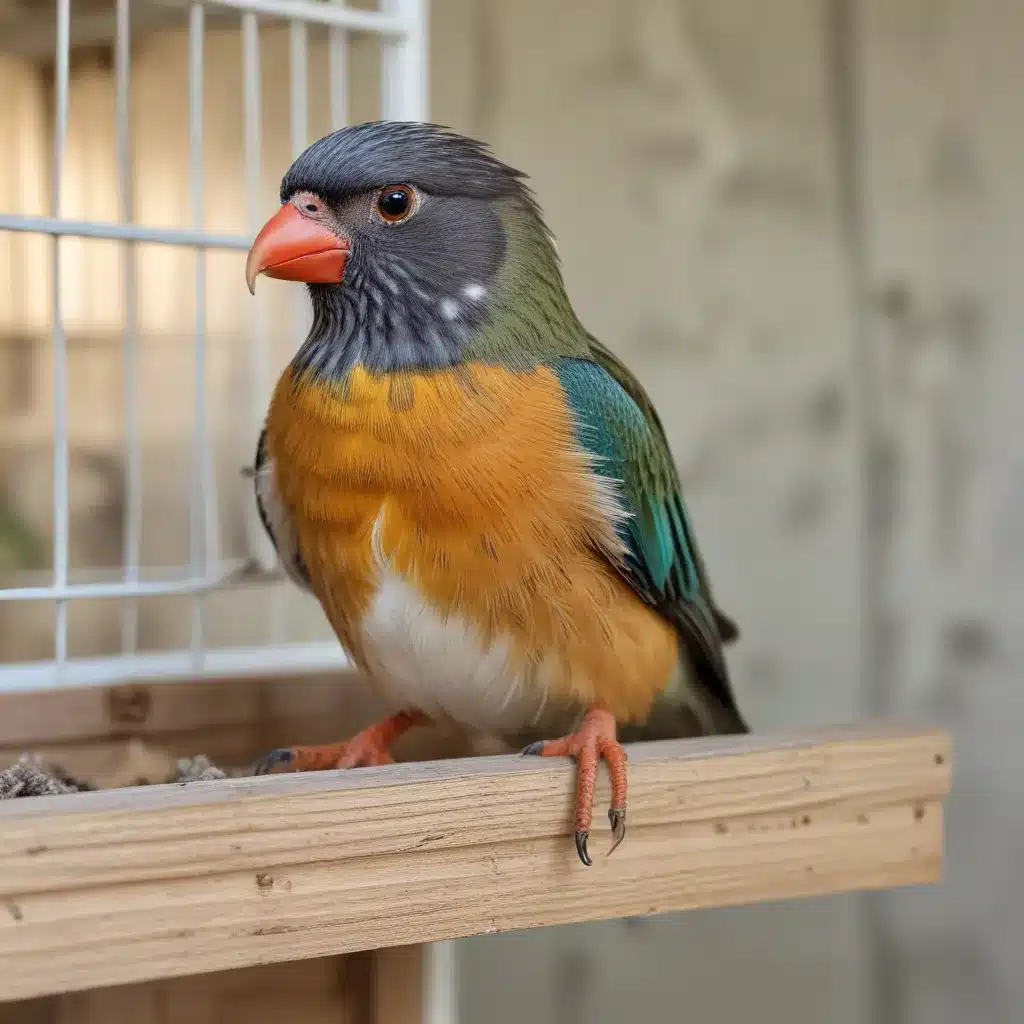
Avian Rescue and Rehabilitation
As an experienced avian caretaker, I’ve had the privilege of caring for a diverse array of bird species over the years. From common backyard birds to exotic rescues, each one has its own unique needs and challenges. In this comprehensive guide, I’ll share my expertise on creating a safe and nurturing environment for rescued birds in your own home.
Rescued Bird Species
Whether it’s a wayward fledgling that’s fallen from its nest or a neglected parrot in need of rehabilitation, there are countless avian lives that can be transformed through compassionate intervention. Some of the most common backyard birds we encounter include sparrows, robins, finches, and mourning doves. With a little TLC, these resilient creatures can often be nursed back to health and successfully released into the wild.
On the other hand, exotic bird breeds like parrots, cockatoos, and macaws may require more specialized care and a longer-term commitment. These intelligent, social animals frequently end up in rescue situations due to irresponsible ownership or improper housing and nutrition. Providing them with a loving, stimulating environment is crucial for their physical and mental well-being.
Avian Rehabilitation Facilities
While professional avian rescue shelters and wildlife rehabilitation centers are the ideal destination for most injured or orphaned birds, there are times when a home-based approach may be necessary or more practical. These specialized facilities have the expertise, resources, and medical equipment to handle a wide range of avian ailments and emergencies.
However, if you have the space, patience, and commitment to care for a rescued bird, your own home can serve as a temporary sanctuary. With the right setup and guidance, you can provide a safe haven for a bird in need until it’s ready to be transferred to a qualified rehabilitation center or released back into its natural habitat.
Avian Habitat Requirements
Creating a suitable living environment for a rescued bird is essential for its overall health and recovery. Whether you’re setting up a temporary enclosure or designing a long-term habitat, there are several key factors to consider.
Enclosure Design
The size and layout of the bird’s enclosure can have a significant impact on its well-being. As a general rule, the cage should be large enough for the bird to fully extend its wings without touching the sides. Perches of varying diameters should be strategically placed to encourage natural climbing and hopping behaviors.
Incorporating enrichment elements like foraging toys, swings, and ladders can also help stimulate the bird’s natural curiosity and prevent boredom. It’s important to ensure that the enclosure is secure, escape-proof, and free of any hazards that could harm the bird.
Environmental Factors
Maintaining the appropriate temperature, humidity, lighting, and ventilation within the bird’s habitat is crucial for its comfort and well-being. Sudden changes in these environmental conditions can be extremely stressful and potentially life-threatening for rescued birds.
Aim to keep the enclosure at a consistent temperature, typically between 70-85°F (21-29°C) for most species. Humidity levels should be monitored and adjusted as needed, usually ranging from 40-60%. Adequate lighting, both natural and artificial, is essential for the bird’s circadian rhythms and overall health.
Proper ventilation is also key to preventing the buildup of harmful fumes, odors, and airborne pathogens. Ensure that the enclosure has sufficient airflow without causing drafts or excessive air movement.
Avian Dietary Needs
Providing the appropriate diet is one of the most critical aspects of caring for a rescued bird. These animals have specialized nutritional requirements that can vary greatly depending on the species, age, and health status.
Specialized Diets
For many bird species, a high-quality, seed-based feed serves as the foundation of their diet. However, it’s essential to supplement this with a variety of fresh fruits and vegetables to ensure they receive a balanced intake of essential vitamins, minerals, and fiber.
Exotic birds, such as parrots and macaws, may require more specialized diets that incorporate pellets, cooked grains, and even specialized avian formulas. Consulting with an avian veterinarian or experienced rehabilitator can help you determine the most suitable dietary plan for your rescued bird.
Nutritional Supplementation
In addition to a well-rounded diet, rescued birds may also benefit from targeted nutritional supplements. These can include vitamin and mineral powders, probiotics, and specialized supplements for birds recovering from injuries or illness.
It’s important to follow dosage instructions carefully and avoid over-supplementation, which can lead to imbalances and potentially harm the bird. Closely monitoring the bird’s response to any supplementation and adjusting as needed is crucial for its overall health and recovery.
Veterinary Care for Rescued Birds
Seeking professional medical attention is essential for any rescued bird, as they may be suffering from a variety of illnesses or injuries that require specialized treatment.
Common Avian Illnesses
Some of the most common health issues encountered in rescued birds include wing injuries, feather and skin conditions, and various infectious diseases. Prompt diagnosis and appropriate treatment by an avian veterinarian can make all the difference in the bird’s recovery and chances of survival.
Rehabilitation and Release
Once the bird has received the necessary medical attention and has stabilized, the next step is to begin the rehabilitation process. This may involve physical therapy, gradual reintroduction to natural environments, and behavioral training to ensure a successful release back into the wild.
The timeline for this process can vary greatly depending on the severity of the bird’s condition and the species-specific needs. Experienced avian rehabilitators will work closely with you to develop a customized plan and guide you through the necessary steps to give the bird the best possible chance of thriving in its natural habitat.
By providing a safe haven, specialized care, and a pathway to recovery, you can make a profound difference in the life of a rescued bird. Whether it’s a common backyard species or an exotic breed, your compassion and dedication can truly transform the future of these remarkable creatures. To learn more about avian rescue and rehabilitation, I encourage you to explore the wealth of resources available at Mika Birds Farm.


